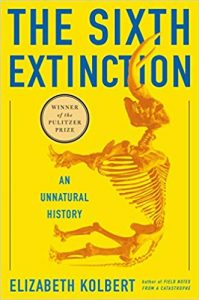By Patricia Fox
Rain has been a dominant feature in the Greater Cincinnati-Northern Kentucky area during the spring and early summer of this year.
Even though the rain has been spotty most of the time, cloudy skies and the rain that often comes with it have dampened many weekend plans, weddings, swimming dates and gardening ventures.
The Midwest has also been plagued by rain, but the persistent downpours have caused serious flooding in Missouri, Iowa, and Kansas.
Outrageous storms have also hit these states and even the Dayton, Ohio area, leaving residents homeless, towns devastated, and loved ones lost. In areas prone to drought, however, the absence of rain in California has led to overwhelming fire storms again causing death and destruction.
What’s with the weather? Certainly it’s just a fluke, right?
Then the idea of climate change begins to take root in the minds of those affected as well as those who see it from a distance on TV. Whether you are a believer or a denier regarding climate change, it is a controversial topic that needs discussion.
By doing so, a better understanding of the issue can allow those willing to explore it a chance to recognize what has become the “new normal” and how to adapt.
Several months ago, Friends of Big Bone decided to change its approach to a program offered after the June 27 meeting and invite the public to explore climate change by reading Elizabeth Kolbert’s The Sixth Extinction and enter into a discussion at the Scheben Library- 7 p.m.
Kolbert’s book won a Pulitzer Prize in 2014.
Her content is well-researched, and her writing style is clear and engaging. As a result, this issue becomes more accessible through the reading of her ventures to come to terms with the devastation of climate change and what has caused it over time.
Of particular interest to FOBB is Kolbert’s Chapter 2. It explores the concepts of extinction, evolution, and climate change as a result of the mastodon bones discovered at Big Bone by Baron Charles de Longueuil who led a military force from Montreal in 1739. His discovery led to an examination of the bones which allowed the concept of extinction to enter into the discussion of the scientists and naturalists of the late 1700s and early 1800s.
Even though extinction was not fully understood by these learned men at that time, examining the bones became important. As a result, President Thomas Jefferson requested that in 1803 the Corps of Discovery, led by Merriweather Lewis and William Clark, be on the look-out for the animals that left behind the large bones.
Later, Jefferson sent Clark to this Land of the Big Bones in 1807 to find some of these bones and to send them to him. Those who have visited Jefferson’s Monticello can attest to the fact that he did receive them, for they are on display as visitors enter the hallway of his home today.
The Sixth Extinction, however, goes beyond Longueuil’s discovery and the controversy that followed. Kolbert also explores how Darwin and his theory of evolution play a part in the understanding of climate change and how the earth has experienced five major extinctions of living organisms prior to the one she and others feel is taking place now.
As anthropologist Richard Leakey warned, “Homo sapiens might not only be the agent of the sixth extinction, but also risks being one of its victims.”
Reading and discussing the contents of Kolbert’s book provides a way to come to terms with this dire predicament. Sharing our reaction to the contents of the book with other readers broadens our understanding of the “new normal.” Being a part of the climate change debate encourages readers to take a stand on the issue and work at becoming part of the solution.
Patricia Fox is the president of Friends of Big Bone





















